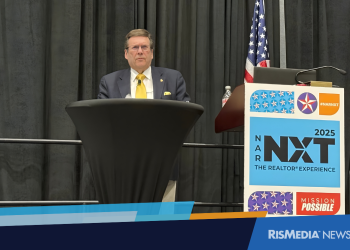As the urban revival in some American cities pushes out lower-income earners to the nearby suburbs, many of those edge cities are struggling to redefine their purpose—and identity—in a new economy.
According to the U.S. Department of Housing and Urban Development, nearly half (47 percent) of the nation’s 1,700 “first-tier suburbs” are vulnerable, meaning the area’s poverty rate is rising while its population and property values are declining. In a sense, these first-tier suburbs are experiencing what many urban centers experienced in the 1960s and ’70s as higher earners moved away and were replaced by lower-income families.
At the National League of Cities’ Congressional City Conference in Washington, D.C., last week, officials from such distressed suburbs said one of their biggest struggles is with low-income and public housing. It’s the easiest type of housing to build from a federal grant perspective, but some local officials say they’re becoming oversaturated with it. Additionally, social services in these suburban communities are struggling under the weight of the new population as more lower-income residents move in.
“The rise of suburban poverty in the suburbs…really deepens our challenge at a time when we are fiscally least prepared to deal with it,” David Sander, a councilmember in Rancho Cordova, Calif., a suburb of Sacramento, told a room packed with his counterparts from across the country.
Providing enough affordable housing for lower-income earners isn’t the only challenge that suburban communities face. An Urban Land Institute study on Baltimore and Southern California suburbs found a strong correlation between new affordable housing and communities that continue to decline economically.
“One of the conclusions was, if you are a first-tier suburb interested in turning yourself around, be extremely cautious about adding too much affordable housing,” Sander said.
Several conference attendees, however, pointed out that federal housing grants for suburban communities tend to be geared toward low-income housing, making it difficult for cash-strapped communities to build a variety of housing that attracts all income levels. John Zanmiller, mayor of West St. Paul, Minn., said his town was recently denied a federal housing grant.
“We met the existing target with market-rate, affordable housing but we hadn’t enough public housing,” he said.
But there are ways to combat a declining median income, according to Sander. Although it’s a “fallacy” to assume a city or town can develop its way out of a problem, he said creating a sense of place is vital to attracting new residents. The focal point of a community doesn’t have to be a 10-block main street but it should have some major draw — whether it’s a theater, museum or major employer. Many communities, for example, are embracing the arts and doing so in a way that reflects the increasingly diverse population of first-tier suburbs.
Along with this effort, there’s usually a desire to rebrand an area, Sander said. But he warns communities to be careful when it comes to stamping tag lines on street banners.
“These have to be real, honest efforts if they are going to work,” he said. The most common mistake in rebranding a community, he said, is coming up with a catch phrase that has nothing to do with the community’s character. “We really have a lot to offer in first-tier suburbs, but you’ve got to be honest about what you are when you promote it.”
Lastly, engaging residents who are invested in the suburban community is key. In doing so, city officials need to shift from thinking of their residents as customers to thinking of them as community partners.
“You can make your dollar go a lot further if you can get citizens actively engaged in helping you promote the city’s vision,” Sanders said.
Liz Farmer is a finance writer for Governing Magazine. You can view this original post at Governing.com.










